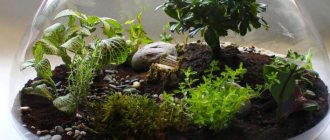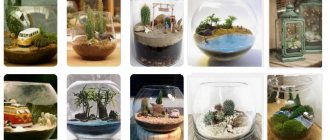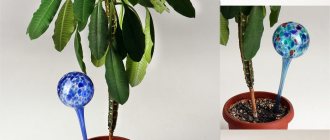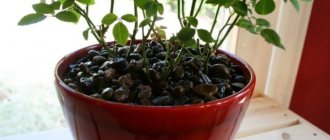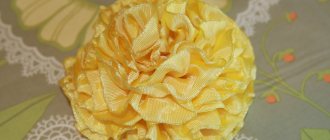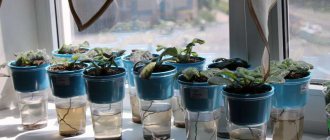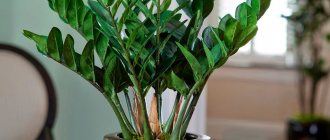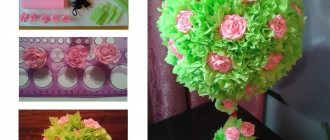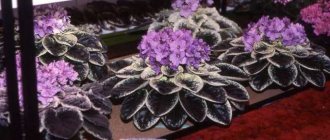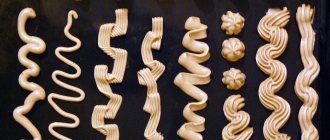The desire to bring a piece of nature into the everyday environment of an apartment is natural. A small area, active pets or allergic problems can become obstacles to cultivating indoor plants. A florarium will help out in a difficult situation, the design of which has become a fashionable trend in recent years. Purchased copies equipped with an automatic process control system will not be cheap. It is much more profitable to do the design of the florarium with your own hands. We'll tell you in detail how to make an original composition yourself.
How to choose plants for a florarium
The choice of plants for a florarium depends entirely on your preferences, imagination and plans. First, decide on the ecosystem you want to create. Desert, tropics or mountain slopes - what kind of landscape do you want to reproduce?
Once a landscape has been selected, learn all about the soil that is typical for that type of terrain. Make sure that you can fully ensure the quality characteristics of the soil. And only after that start landscaping.
Types of florariums and themes of compositions
Before you begin the creative process of creating a florarium, you should familiarize yourself with the variety of models, placement options and rules for selecting plants. The following containers are suitable for decorating an original composition:
- Various aquariums. The presence of a lid and lighting facilitates the process of caring for plants in the florarium.
- Transparent vases, glasses and glass jars of various sizes and configurations.
- Laboratory flasks and bottles represent the most difficult option for arranging a composition of plants.
Comment! The beauty of a florarium practically does not depend on the size or sophistication of the vessel itself. The originality of a mini garden is achieved by competent selection of plants for decoration.
In most cases, the florarium is placed on a flat surface, it can be a window sill or a table. Less often they choose the option of hanging from the ceiling. If there is not enough free space, a good option would be to mount a florarium with a composition of plants on the wall.
The filling of the vessel depends on the preferred theme. The special atmosphere of the florarium allows you to create different climatic zones and natural landscapes:
- very often they resort to the design of the tropics;
- for beginners it will be easier to cope with caring for the desert landscape;
- a mountain landscape or a dense forest - with the competent approach of a florist, there are practically no limits to imagination.
Plants for tropical florariums
The tropics are perhaps the most complex type of eco-environment. It is necessary to constantly provide a high level of humidity along with the supply of light for at least 12 hours. In addition, the presence or absence of air flow plays a big role. A large-scale tropical landscape can only be maintained with the installation of a climate control system. But miniature gardens will also require constant attention.
The most spectacular inhabitants of indoor tropics:
- indoor fern,
- crotons,
- moss,
- Fittonia.
Tropical plants for planting
Experienced florists and decorators will benefit from growing tropical species in a confined space. When making such a plant terrarium, special attention must be paid to maintaining a certain temperature, humidity and light.
The following tips will help you build a tropical-style florarium:
- It is necessary to select the optimal ratio of shade-tolerant and moisture-loving crops. Pileas, orchids, dwarf varieties of ferns, fittonia, peperomia, selaginella, and nephrolepsis have proven themselves well.
- It is recommended to plant tropical plants only in closed containers, as they like high humidity.
- Multi-tiered compositions must be formed so that the foreground remains open.
- The basis for the soil is a mixture of coarse sand, leaf soil and peat.
- You should not water the decorative object frequently. It is enough to irrigate the soil once a month with closed soil, once a week with open soil.
- We emphasize that the creation of a tropical florarium is suitable for those who have experience working with such objects.
Florarium-desert
Phytodesigners recommend starting with mini-greenhouses, which contain the most unpretentious plants. When we talk about the simplest florarium, of course we are talking about desert inhabitants.
Pay attention to the quality: it must be pure coarse sea sand. Small stones, roots, and shells of different sizes will add color.
Which desert representatives are suitable for modeling a mini-landscape:
- cactus,
- aloe,
- agave,
- echeveria,
- Haworthia.
DIY florarium from an aquarium: master class
As you already know, you can use a wide variety of vessels to make your own mini-greenhouse at home. To do this, you can simply comb through your own mezzanine or balcony in search of a suitable container.
If you cannot find such a vessel, use a regular aquarium, which you can purchase new or use a previously used vessel.
How to make a florarium with your own hands? Follow the advice of the masters and you will succeed.
Choosing a location for a florarium
Before composing the composition, consider its further location. Firstly, it must be located in plain sight so that guests can admire it. Secondly, it must be combined with the interior you have chosen.
If you are planning a large greenhouse, consider the arrangement of flowers in accordance with the design - by shades, sizes and other additional decorations.
Florarium in the interior of the room
Materials and tools used
To make a florarium you will need materials that will only suit the flight of your imagination. But the main details can be identified as follows:
- drainage - it is placed on the bottom, various bulk products are used (river sand, colored decorative sand, broken brick, etc.);
- suitable soil - depends on the type of plants used;
- sphagnum moss or any other type of plant to retain moisture;
- surface decor - pebbles, glass beads and other bulk components;
- decorations - it all depends on your imagination; figurines of animals, people, mini-furniture and other attributes are suitable.
Along with collecting materials, it is necessary to select the tools that will be required for the work. Here you will need gloves, tweezers of distinctive sizes, a syringe for further watering or a watering can, a spray bottle for wetting each layer of soil, and any item for digging.
Materials used for florarium
Forest miniature
Forest miniatures are second only to the tropics in terms of complexity of execution and microclimate maintenance. The main problem is the root system of the forest flora, which requires a large amount of soil with a rather complex composition. It is simply impossible to maintain all proportions perfectly.
In addition, the forest is different from the forest: the bushes of the middle zone are unlikely to get along with moss from Siberia. Even the peat must correspond to the overall design.
But all of the above does not mean that we should abandon this luxurious idea:
- Use special fertilizers for feeding and neutral soil.
- Disinfect the soil with phytosporin and activated carbon more often.
- Replace rotten wood parts of the structure in a timely manner.
- Ventilate the indoor mini-forest regularly.
What plants to use
A florarium is no different from a flower pot, which does not have a drainage hole. Therefore, many common and rare plant species are suitable for planting. You can buy them in specialized gardening stores, flower shops, or replant existing ones from pots.
Limitations depend only on:
- size of green spaces;
- features of the root system;
- difficulties of care;
- rapid growth.
You should buy slow-growing, low-growing species, the size of which does not exceed 20-25 cm, so that the composition pleases the eye for a long time. As a last resort, crops are used that do not lose their attractive appearance when further trimmed with scissors.
Please note that it is necessary to select plants that can get along with each other in an enclosed space. Because some species are capable of causing harm and releasing poisons contained in the roots. The optimal solution to this problem is to purchase seedlings of the same family.
The most common crops used in mini-gardens are mosses, ferns, orchids, cacti, succulents and ivy.
Florarium with mountain landscape
Mountains are a favorite theme of phytodesigners. What could be more picturesque than cliffs with green spaces? The large list of plants that can be used to create an imitation is also attractive:
- dwarf ivy,
- indoor fern,
- saxifrage,
- asparagus and others.
The requirements are the same:
- Achieve complete compatibility between soil and plants.
- The level of humidity, lighting, temperature must fully correspond to the type of landscape.
- Plant only low-growing varieties.
- A vase for a florarium should have a wide neck - this is necessary for good air circulation.
Popular types of mini-gardens
For busy people, an unpretentious version of the composition with minimal care is suitable. Those who put their heart into growing plants will love the complex variations of crops behind glass. Let's get acquainted with the proposals of specialists.
A corner of the sultry desert
The main elements of the florarium are succulents. Plants are not afraid of prolonged drought and successfully absorb moisture from the air and soil. They quickly take root in a glass vessel. Suitable soil is sand mixed with soil. Drainage and decor are made from pebbles and ceramic chips.
Mountain landscape
The principle of creating a composition does not change. Drainage is placed at the bottom, then soil saturated with organic elements. Pebbles with sharp corners, reminiscent of rocks and cliffs, are suitable for decoration. Ferns, ivy, succulents, and violets are chosen as greenery.
Wet forest
A miniature glass greenhouse successfully recreates the landscape of a tropical jungle. Trees and shrubs are planted, which are freely sold in a network of flower shops.
Best suited:
- begonia;
- dwarf ficus;
- asparagus;
- crotons.
The main thing is that the soil of the florarium is suitable for all seedlings. When caring for plants, maintain an optimal temperature of approximately 25°C. High air humidity is created using a tiny vessel of water placed inside the composition.
Capricious orchids behind glass
A florarium with a small hole can be a wonderful habitat for fancy flowers.
It creates unique conditions reminiscent of the tropics with the help of:
- direct sunlight;
- additional fluorescent lamps;
- ventilation (holes in the container);
- electrical devices.
Orchids planted in a glass container look perfect against the background of a green bedspread and decorative elements. The composition is suitable for both a gift and home interior.
Oriental bonsai
An exotic craft with a unique tree will give the room a chic look. A copy of the natural landscape is decorated with:
- moss;
- pebbles of various sizes;
- fresh herbs;
- wood chips;
- plastic figures.
A landscape of a quarry, a grotto, and a Latin American character is successfully created in a glass vessel.
Florarium with flowers
Floral arrangements can be either temporary (with water) or long-term projects - it all depends on the qualities and properties of the flower.
- Orchids. Installations with this capricious but beautiful inhabitant of the subtropics are placed in a separate group. Prestigious orchidariums require painstaking work and tireless care to ensure a comfortable microclimate.
- Cyclamens. The butterfly flower is grown either alone or in combination with alocasia or fern. Achieving ideal conditions in a glass container for the delicate creature that cyclamen has always been is quite difficult. But it is even more difficult to maintain these conditions in proper condition.
- Anthurium is like no other suitable for a mini-greenhouse. Bright flowers fill the entire space, creating a magnificent three-dimensional picture. Naturally, we are talking about dwarf hybrids. However, ordinary varieties also perform well in the long term.
- Violets are good both in closed mini florariums and in open ones. If the flower is provided with comfortable conditions and care, it will delight you with its flowering for a long time.
What container to use for a florarium?
Of course, ideally, you should order a ready-made empty florarium; it is unrealistic to create such a structure yourself. But, if you want to save money, look for available means: interesting glass teapots, jars, salad bowls, glasses, glasses, bottles, flasks, large lamps. Perhaps you or someone you know has an old fish aquarium lying around. Transparent plastic containers are also suitable for training, although they will not last long. Sometimes wood is also used, materials are combined.
According to the form they are distinguished:
- geometric florariums (square, rectangular, beveled, cubes, icosahedrons, cones, etc.);
- vases;
- round tanks;
- exclusive containers created according to individual templates.
If possible, choose a container shape that matches the type of plants you choose. If these are tall crops, a vase or glass container in the form of a drop will come in handy.
A vessel for a mini-garden can be open or closed. The first option is more common. It is more convenient to form a composition in it, fresh air constantly circulates, it is ideal for planting cacti and succulents, they can be easily moved. Closed florariums provide the required level of moisture and temperature, ideal for tropical crops, and provide complete protection from drafts, pets, and small children. But they can only be created by professional florists who know what additional equipment needs to be installed and what plants to use. In addition, they need to be constantly ventilated, drainage can release excess moisture, and the plants are more difficult to care for.
English florist David Latimer set a record by creating a closed greenhouse in a 45-liter glass bottle. The scientist placed Tradescantia there, filling the container with compost to a quarter of its volume. This happened in 1960. Only 12 years later the aquarium was opened for the first time to add water. The culture lives on today. This became possible due to the circulation of water, air, and minerals. Tradescantia feels great, one minus is that there is not enough space in the 45-liter tank for further growth.
Depending on the type of placement, there are the following containers:
- hanging;
- floor;
- desktop
The simplest and most common are desktop ones. They can be placed anywhere: on a windowsill, on a shelf, on a table. They are small in size and ideal for creating the interior of small apartments and offices. Floor-standing models are often installed in shopping centers, restaurants, salons, and luxury apartments. They are large in size, complex in design, and produced by professionals. Hanging florariums mainly decorate the courtyards of country houses and restaurants. They are made for weddings and other large-scale celebrations to add zest to the interior. You can create them yourself, but you will have to buy fasteners and hooks.
Instructions for creating a florarium
We offer a master class using the example of succulents. We will plant echeveria, crassula and haworthia - the most unpretentious creatures. The installation is suitable not only for home decor, but also for decorating an office space.
Step-by-step instructions for creating a florarium:
- Carefully remove the roots of the purchased succulents from the shipping container and soil. To do this, lightly rub the flower pot between your palms and shake off the soil.
- Making a florarium begins with preparing the container. The container can be anything: glass, ceramic, even metal or wood. The main thing is that the bottom is covered with biomica or covering material - this will protect against rust or rotting.
- We form a drainage layer. Volcanic zeolite, a material with the most universal properties, can be used as drainage.
- We arrange the succulents in the intended order, leaving room for decorative elements. When planting, take into account the factor of subsequent growth of the seedling.
- We fill the roots with a specialized soil mixture. The ideal solution is ready-made soil purchased at a flower shop.
- Lightly trample the root space and spill it with water at room temperature. Try to avoid overwatering: no more than a tablespoon of water for each root. Any more will cause rotting. The larger the shape of the container, the greater the moisture, but not more than 20 milliliters.
- We decorate with decor: driftwood, natural or artificial moss, pebbles, multi-colored crystals.
Remember that succulents love light. Choose a location with sufficient lighting. The frequency of watering is determined by the level of humidity in the room, but not more than once every two weeks.
Original florarium in a hanging vessel
The wide opening of the container greatly simplifies the procedure for decorating a florarium. A round miniature aquarium, a voluminous decorative glass or a hanging drop-shaped vessel are good options for creating an exquisite composition. Prepare the following materials:
- vessel with a capacity of 1.5-2.0 l;
- plants that match the conditions of their keeping, as an option you can take 1 stone rose, a couple of saxifrage bushes;
- materials for drainage design, soil and charcoal;
- decorative elements (driftwood, figurines or houses);
- spoon, tweezers, spray bottle, scissors.
As in the previous master class, the vessel chosen for decorating the florarium is thoroughly washed and degreased with alcohol.
The creative process of creating a composition contains the following steps:
- At the bottom of the florarium, a drainage is formed from expanded clay, pebbles or sand 4 cm thick.
- Activated or charcoal is placed on top. The purpose of the layer is to prevent the development of putrefactive processes in the composition by absorbing chemicals from the incoming water.
- Moistened soil is poured on top. For the selected florarium composition, a composition of leaf soil, peat and coarse sand in a ratio of 1:1:2 is suitable, although for tropical plants it is optimal to purchase a ready-made substrate from the store. To achieve greater decorativeness of the florarium when designing the composition, alternating the soil with layers of colored sand will help.
- The soil is carefully leveled, and holes for plants are prepared with a spoon. To prevent the roots from interfering with neighboring plantings, 3 cm gaps are left between the bushes.
- After removing the plants from the pots, the roots are carefully cleaned from the soil. Using tweezers, the bushes are distributed into prepared depressions in the soil of the florarium, after which the roots are sprinkled with earth using a tablespoon.
Important! The arrangement of the composition is carried out in such a way that the leaves do not touch the walls of the florarium, otherwise the plants will begin to rot over time.
- The vegetation is sprayed with a spray bottle; if necessary, the dry soil is moistened with a watering can. The soil surface is covered with moss. It is natural to include dry twigs or bark fragments into the composition. Moss not only performs a decorative function; at the same time, it successfully absorbs excess moisture and regulates soil temperature.
Caring for a florarium does not contain any innovations: no direct sunlight with sufficient diffuse lighting, periodic watering.
Florariums with bonsai tree
A landscape with bonsai is one of the most stylish and prestigious installations, something akin to art. The cost of individual copies, especially wall works, reaches 250 €.
The most spectacular idea is a tree in a closed geometric florarium. However, phytomasters believe: the microcosm formed in a sealed vessel is so vulnerable that a decrease in temperature of just 2-3 degrees will be disastrous for roots and leaves.
Features of care
An indoor miniature garden should blend harmoniously into the interior and be visible. But you should not leave it in the sun so that the temperature inside the vessel does not rise sharply.
Watering the florarium plants should be done as rarely as possible, only when necessary. This is especially true for cacti. In some cases, additional lighting may be required.
Step-by-step instruction
A florarium can be either simple or complex, depending on your wishes. While models made from sand and air plants (like Tillandsia) are popular, florariums that are made from wet plants like ferns and moss are a unique way to bring the lush, vibrant feel of the forest into your home. Interested in creating one? Look.
Materials and tools:
- A clear glass container (large enough to hold the plant you plan to use);
- Chopsticks or tweezers with long tips;
- Clay soil (for succulents, contains special soil);
- Plants (choose miniature varieties, for example, lemon tree, phytonia, thicket cacti such as Rhipsalis varieties, ask local gardeners what they have to offer);
- Activated carbon to remove moisture (to avoid a too humid environment, use activated carbon as an absorber);
- Other types of rocks: stones, moss, branches, glass, etc.
Instructions:
- Clean the vessel using water and a small amount of bleach. Make sure the container is dry before you begin.
- Shake the activated carbon at the bottom of the glass container. You don't need a lot of coal, the main thing is that it is not visible at the bottom of the vessel.
- If the plants are too large, you can divide them without touching the roots; carefully divide them into small parts, which you place in your vase.
- Spread a thin layer of soil over the activated carbon, making small indentations for the roots.
- Carefully plant the plant in the hole. Use a tablespoon or other scooping object to fill the space around the plant with soil, stamping it around the roots to provide stability and keep it upright.
- If your vase is large, you can add another specimen. If not, you can fill the remaining space with items that can sit on top of the soil, such as rocks, moss, phytonia, or crystal shards. Remember to plant live plants first and decorative items last.
- Water it lightly and place it in a place where it will receive enough daylight (read the plant label or talk to the people at the store where you bought it to find out how much light it needs).
